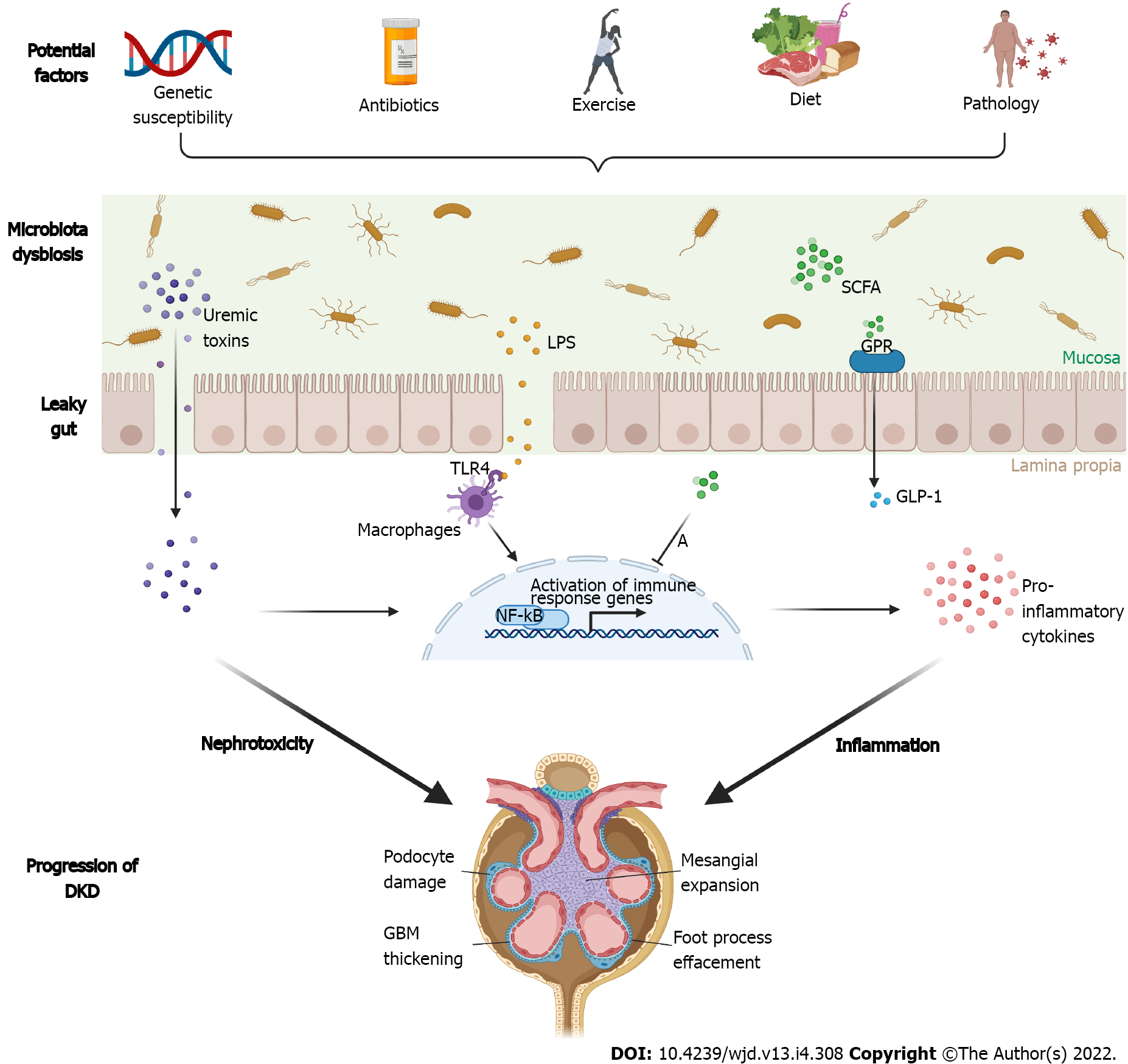Copyright
©The Author(s) 2022.
World J Diabetes. Apr 15, 2022; 13(4): 308-318
Published online Apr 15, 2022. doi: 10.4239/wjd.v13.i4.308
Published online Apr 15, 2022. doi: 10.4239/wjd.v13.i4.308
Figure 1 Pathogenic associations between gut dysbiotic microbiota and development of diabetic kidney diseases from the gut-kidney axis.
On the one hand, endotoxins and uremic toxins accumulate because of gut microbiota dysbiosis and leak into the systemic circulation via a damaged gut barrier, which effectuates inflammation and nephrotoxicity. On the other hand, the dysbiotic microbiota results in a decrease of short chain fatty acids (SCFAs)-producing gut microbiota. SCFAs can activate transmembrane G protein-coupled receptors, which further stimulate secretion of glucagon-like peptide-1. In summary, SCFAs production in normal condition stabilizes the blood sugar level and presents protective effects on kidney cells. LPS: Lipopolysaccharides; SCFA: Short chain fatty acids; GPR: G protein-coupled receptors; GLP-1: Glucagon-like peptide-1; NF-κB: Nuclear factor kappa beta; TLR4: Toll-like receptor 4; GBM: Glomerular basement membrane; A: Means inhibition; →: Means activation.
- Citation: Lin JR, Wang ZT, Sun JJ, Yang YY, Li XX, Wang XR, Shi Y, Zhu YY, Wang RT, Wang MN, Xie FY, Wei P, Liao ZH. Gut microbiota and diabetic kidney diseases: Pathogenesis and therapeutic perspectives. World J Diabetes 2022; 13(4): 308-318
- URL: https://www.wjgnet.com/1948-9358/full/v13/i4/308.htm
- DOI: https://dx.doi.org/10.4239/wjd.v13.i4.308









